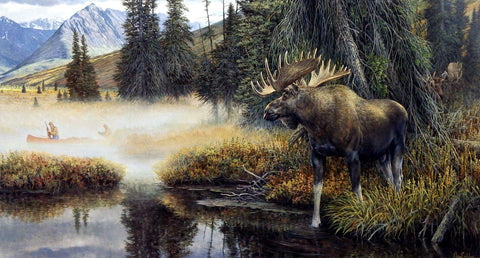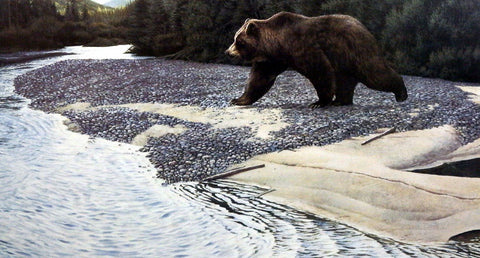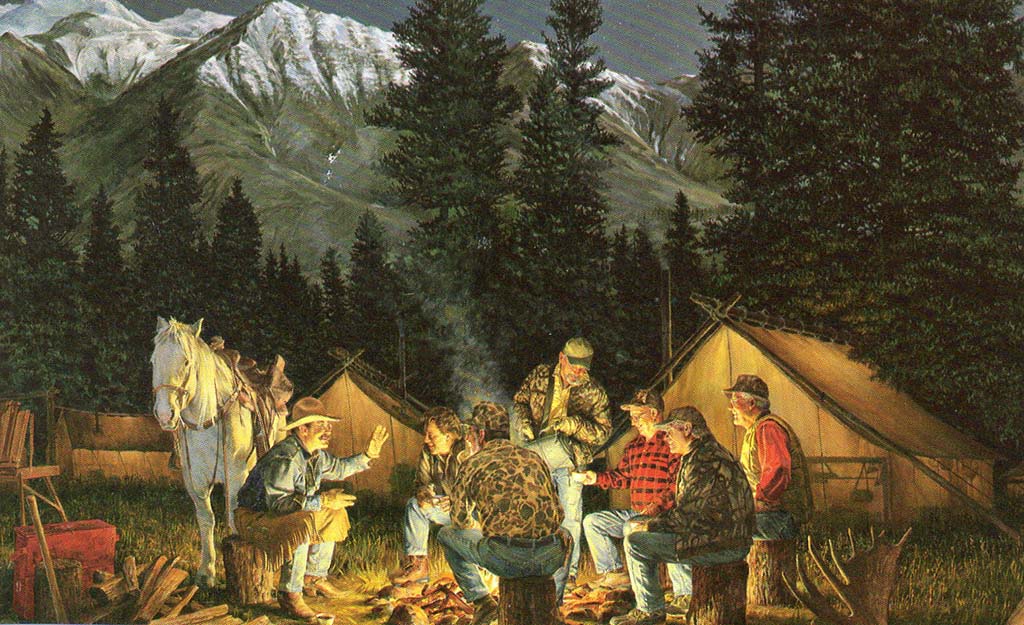by Dan Simmons
–
This is the time of year when your non-hunting friends begin to ask, “Why do you hunt?” and beginning hunters ask about the hunting lifestyle, culture and what it takes to be a good hunter.
I’ve been around it long enough as a game warden, guide, lecturer and now story teller, and have it pretty well figured out. Here is what I tell folks when asked:
The most important aspect of the hunt is clearly the interesting people you meet around the campfire or fireplace at the lodge, individuals who live active lives and appreciate life’s most basic aspects.
These campfire conversations revolve around discussions of fire, wind, water and earth; the mountains, canyons, lakes we have visited; and the game we have seen and taken; old friends we’ve hunted or fished with and remembering those who are no longer with us; and of course the challenge and excitement of the chase.
It’s also a time with no television, telephones, traffic jams or mortgages, a time to reconnect with an earlier and simpler life, to be part of the natural world of our fathers and their fathers, back to time immemorial. It continues to be the reality of many people in isolated parts of the world. That is the essence of the hunt.
My artist friend Ron Van Gilder has called this one of the six tenets of hunting and he has captured it well in his painting, “The Tales We Tell.” I’m right there with him.
He describes five other tenants of hunting which parallel my thoughts on hunting (that’s probably why I enjoy him and his work so much).
Another aspect is the landscape. The high alpine meadows and streams bordered with crocus and marsh marigolds are my favorite, and Ron has depicted it perfectly in “The High Life” with Dall sheep among the cliffs and crags.
The harsh deserts with their brilliant colors also inspire us with their power and remind us of our frailties. We become dependant on natural forces, not being the masters we sometimes suppose we are. The beauty and challenge of these places have the ability to make us whole.
The prairie and plains, with their vast unending vistas do the same, as do the world’s tropical rainforests and jungles. All of these remind us of our place in the natural world and challenge our strength, courage and abilities.
The third of Ron’s aspects of hunting is the unexpected, which he depicts in “The Unexpected One” with a huge elk coming from behind two bow hunters focused on a smaller elk crossing a stream in front of them. This actually happened to him on a British Columbia hunt.

A good hunter always anticipates the unexpected opportunity or challenge. It defines the hunt as opposed to “the kill.”
The unexpected can come in the form of an incredible sight, as the evening light plays across the face of a mountain or the displaying behaviors of bull elk or rams challenging one another for a mate. It is not the same as seeing it on T.V. It is real, as life is real.
A fourth aspect is tradition. It varies in different parts of the world, but always grounds us in who we are and from where we have come.
Ron’s “The Good Old Ways” depicts the tradition well. The hunters, in their canoe, are slowly gliding through a mist-laden slew along a Yukon River, with a large bull moose peeking out from the thick forest. I’ve canoed this river and experience it again through his art.
For others it might be a goose blind at dawn or stalking on a trail through a stand of birch at the edge of a meadow. For me it’s a pack filled with everything I need for a camp, a hike up a mountain trail, the potential of seeing game and a night filled with the same sights and sounds our grandfathers experienced.
Some see tradition as a well-balanced rifle, like a Winchester model 94, a bow or even a spear in some parts of the world. Wherever you find hunters, as opposed to shooters, you’ll find a respect for traditions.
And then there’s patience. As we mature we would like to think we gain patience and wisdom, but perhaps we just slow down a bit. Whichever it is, Ron’s fifth element, “The Waiting Game,” depicts it perfectly as the archer waits for the deer to come just a bit closer.
Beginning and non-hunters are under the impression that all one needs to put meat in the freezer is a license and a gun. They soon learn the difference between hunting and shooting.
Experienced hunters know there is no sure thing. One can hunt for days, even weeks, without having a chance to cleanly harvest an animal, or possibly even seeing one. I’ve been on many marvelous hunting adventures that were simply at the wrong place or time.
Patience, and its cousin, perseverance, are essential requisites to becoming an accomplished sportsman.
The sixth and final element of hunting is pure luck, which some define as, “preparation for opportunity.” Ron’s “Lucky Break” takes us on a Northwest Territories caribou hunt near the shores of McKay Lake. It was the last day of a ten-day hunt when Ron and his Inuit guide stopped for a shore lunch and found themselves in the path of a migrating herd. Pure luck?
It was “The Unexpected One” as they were hunting in the “Good Old Ways.” They won the “Waiting Game” and had their “Lucky Break.” As you read this consider yourself one of the campfire friends who enjoy “The Tales We Tell.”

To view Ron’s canvases illustrating these principles, or for more information go to www.wildwings.com;
If you have a story or comment about this or other articles please contact me at sportsmansquestdan@gmail.com
Ingredients:
- 2 pounds of elk roast, cut into 2-inch cubes;
- ½ cup flour;
- 1 Tbsp ground black pepper;
- 1 Tbsp salt;
- 2 Tbsp cooking oil;
- 3 strips of bacon, cut into small pieces;
- 1 onion, sliced;
- 2 cloves garlic, sliced;
- 2 lbs carrots cut into 2-inch pieces;
- 2 lbs of potatoes, cut into 2-inch pieces;
- 1 lb of mushrooms, cleaned;
- 1 Tbsp dried thyme;
- 1 small can of diced tomatoes;
- 1 quart of beef broth;
- 2 cups red wine; 2 cups of water
Directions:
- Place flour, salt, pepper and elk into a small paper bag, shake well and then remove elk;
- in a cast iron Dutch oven, cook bacon in oil;
- add elk pieces and brown on all sides;
- add onion and cook until soft;
- add all other ingredients, cover and bury in fire pit;
- cook for four to six hours;
“Why We Hunt” first appeared in the Las Vegas Review Journal’s Pahrump Valley Times

